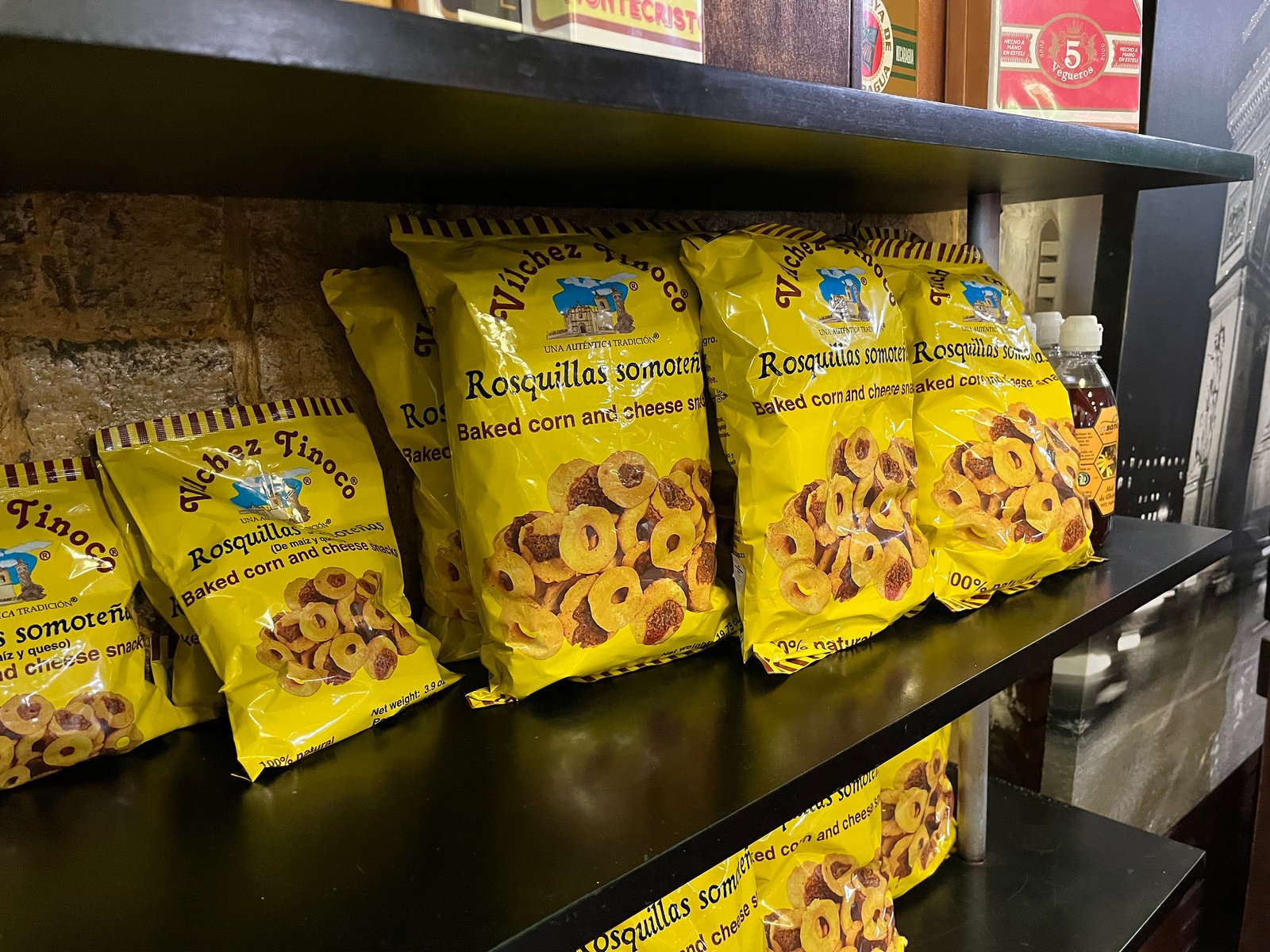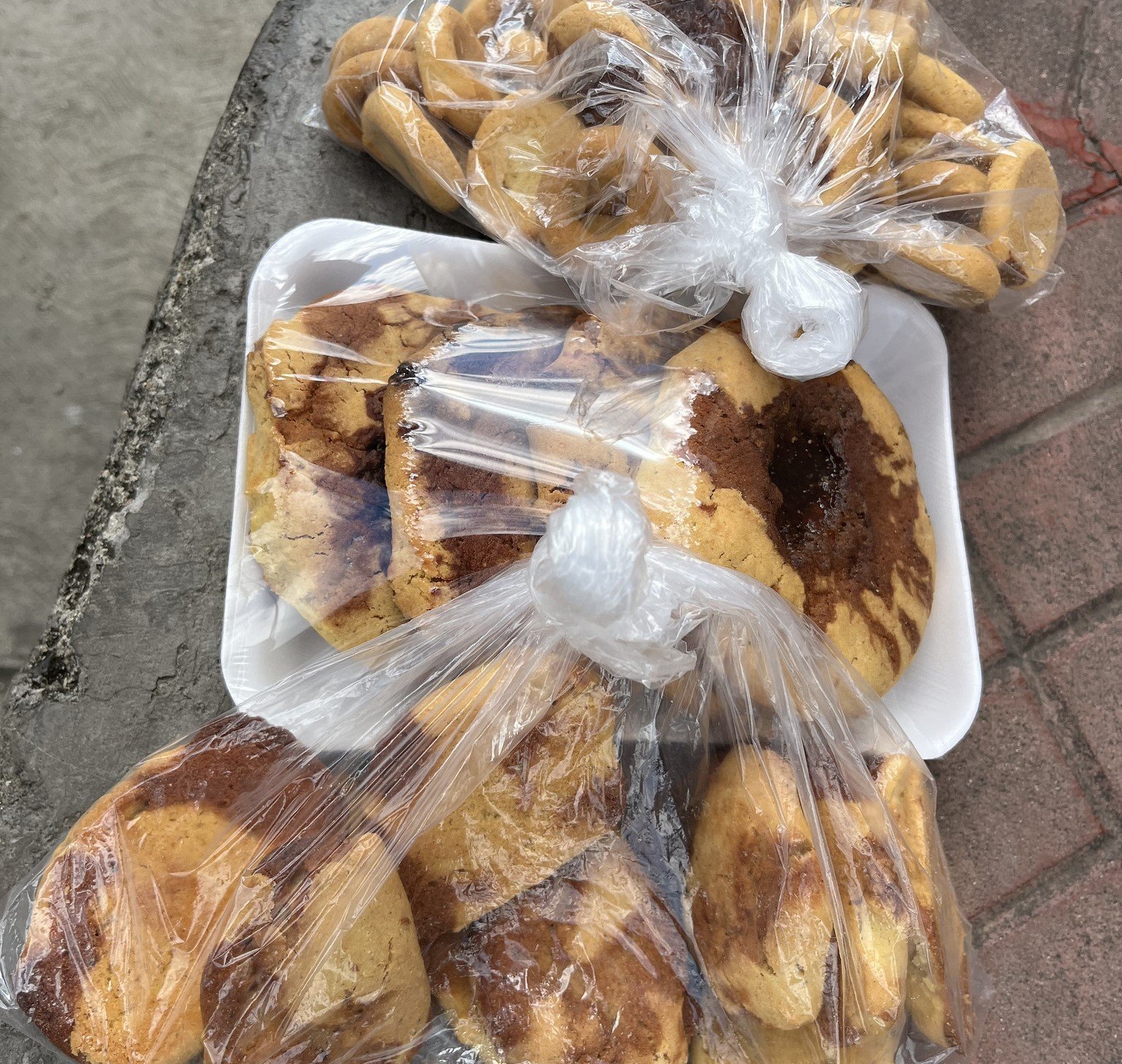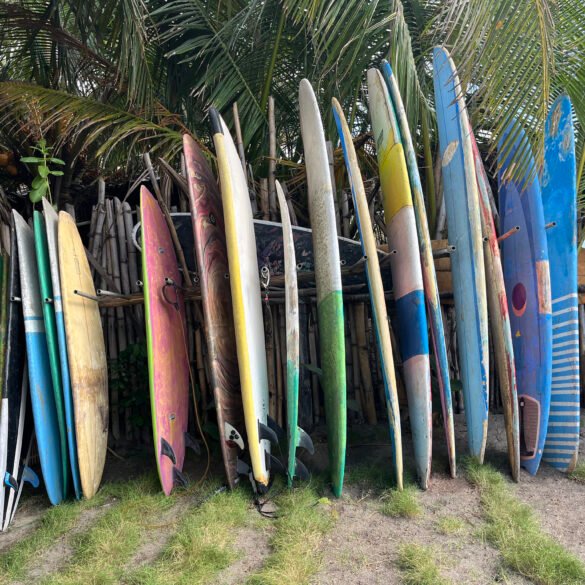Over the last five months, we chronicled our travels through Nicaragua in great detail on this blog. By the sheer number of posts from this country, you can tell that we absolutely enjoyed our time there. And although we plan on coming back and writing more about this beautiful place, for now, the only topic left for us to cover in depth is Nicaraguan cuisine. So, without further ado, here are our 10 favorite dishes of the Land of Lakes and Volcanoes.
1. Gallo pinto
The national and most emblematic dish of Nicaragua. Translated from Spanish as “speckled rooster,” gallo pinto is a delicious combo of rice and red beans cooked in the way only Nicaraguans know how to do. If America runs on Dunkin, Nicaragua definitely runs on gallo pinto. This hearty dish is the daily source of energy for the hardworking people of Nicaragua and is consumed for breakfast, lunch, and dinner. The dish is so ubiquitous that I dare you to visit Nicaragua and not try it. Frankly, I don't think it's possible. Whether you eat at humble mom-and-pop shops or fancy hotel restaurants, chances are sooner or later you will find gallo pinto on your plate. We ate gallo pinto every single day during our 16-day stay (sometimes even more than once a day) and never got tired of it. Simple and modest, it's very Nicaraguan (although the neighboring Costa Rica also claims it as its own).


2. Vigoron
If there are competing claims over gallo pinto, vigoron is uniquely Nicaraguan. A mound of boiled yucca, chicharron (fried pork rinds), and marinated cabbage salad served on a banana leaf is what you get when you order this Nicaraguan classic. Granada’s central park is one of the best places to try it (it's also rumored that the dish originated here). There are several kiosks selling vigoron, but by a unanimous vote, we chose El Gordito (the Fatty), a kiosk that displayed a poster of two jolly overweight people endorsing the establishment. We munched on vigoron after a long day of exploring Pueblos Blancos and like gallo pinto, it was simple but very nutritious and filling. As we were cleaning our plates, aka banana leaves, we only hoped that nobody from the shop would show up with a camera and ask us to pose for a new promotional poster. And, thank goodness, nobody did.
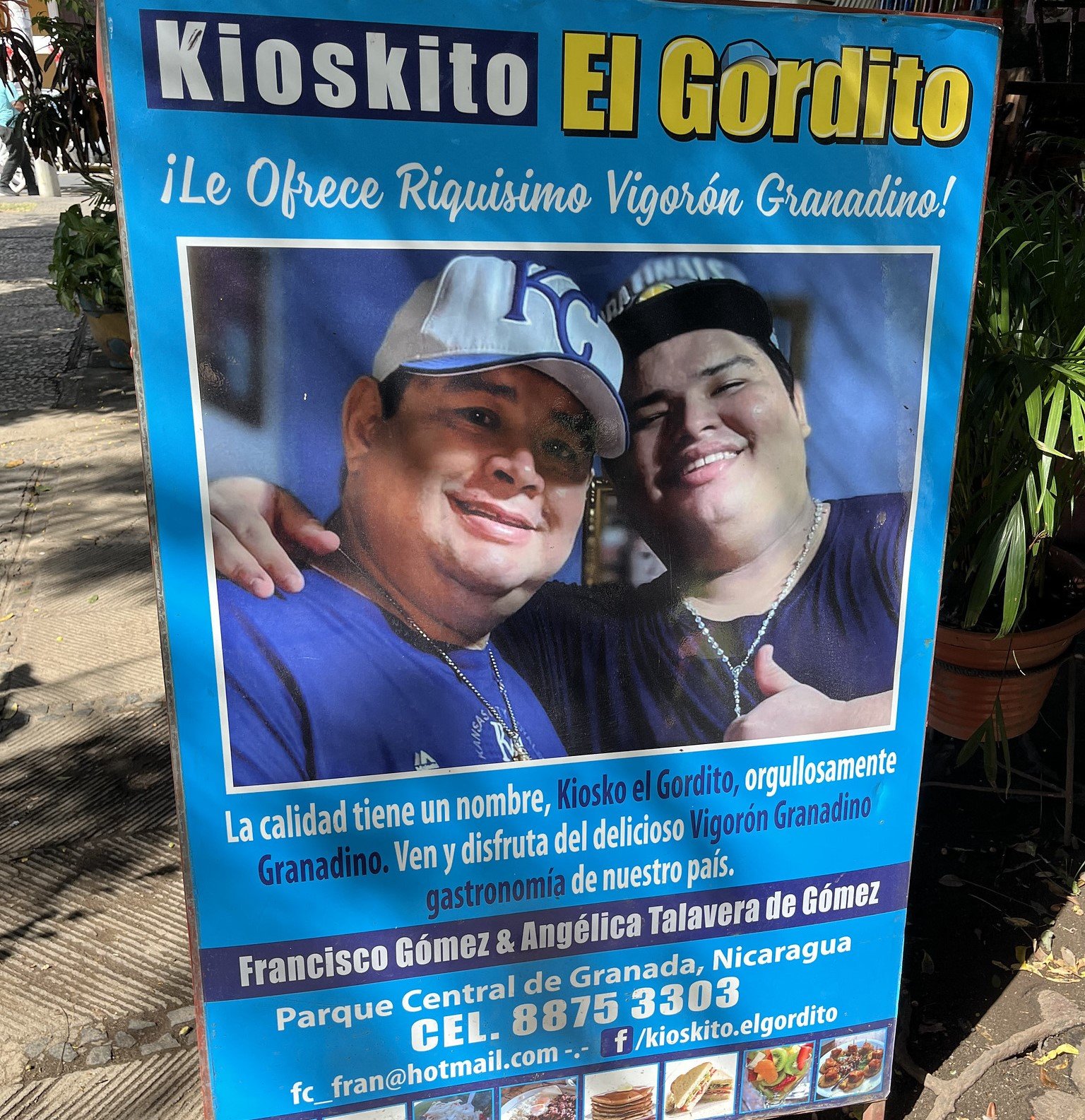
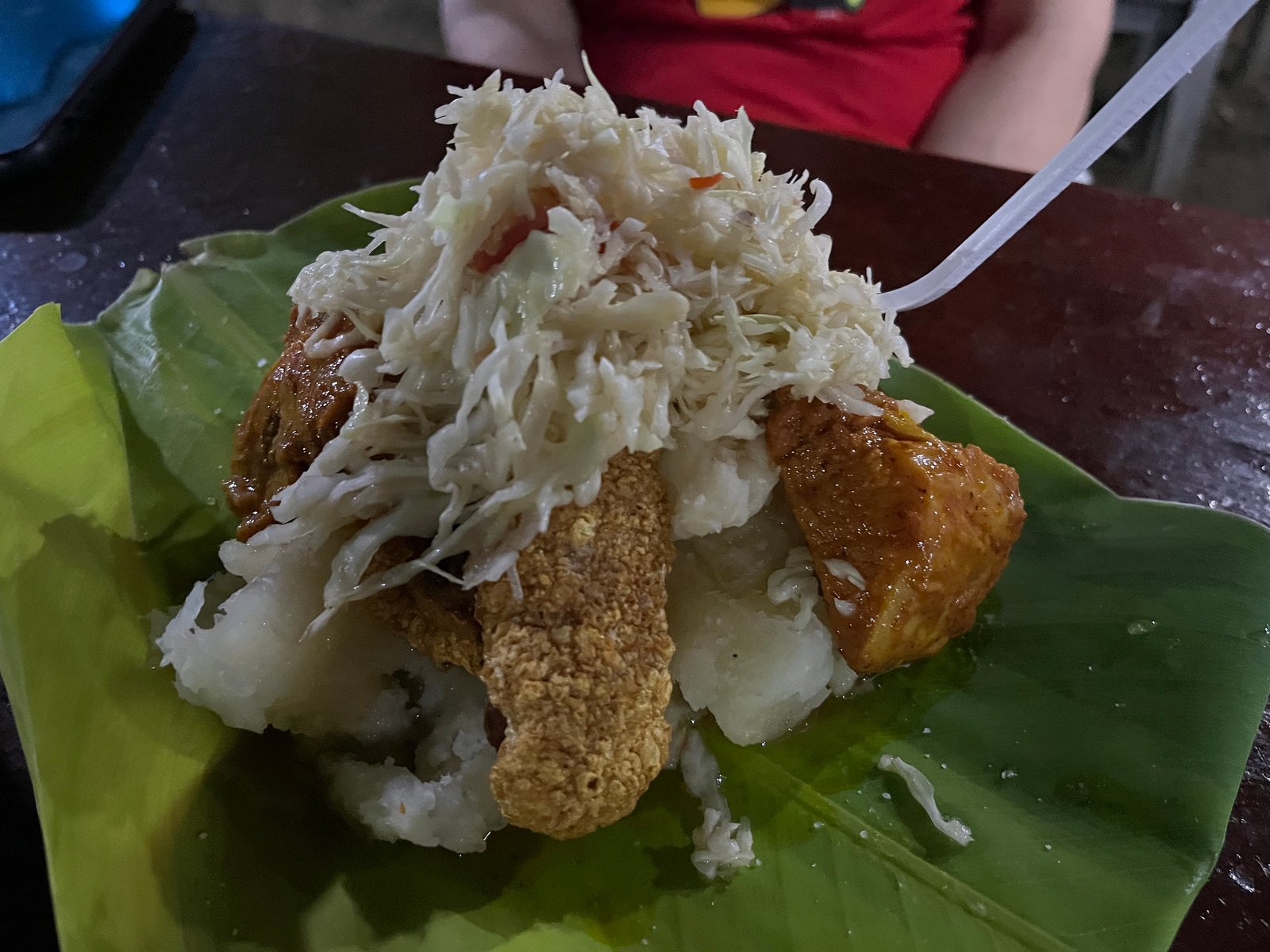
3. Nacatamal
To this day, we are puzzled as to why it's called nacatamal and not nicatamal. After all, it's a Nicaraguan dish we are talking about. For those who read my post in Spanish, I described nacatamal a little bit there. This type of tamal (corn masa wrapped in banana leaves) is stuffed with pork, rice, potatoes, tomatoes, onions, and spices. It's a sort of hangover food that people eat on weekends or special occasions like birthdays and weddings. Edgar, our Airbnb host in Matagalpa, woke up early Sunday morning to drive to town to get us this delicious Nicaraguan classic for breakfast. Per Edgar, people in Nicaragua disagree over whether nacatamal should be eaten with a tortilla or a piece of white bread and whether you drink coffee or Coca-Cola with it. Our host belonged to the white bread/Coca-Cola camp, so we adapted his style. The nacatamal breakfast was so good, tasty, and filling that we didn't even need lunch that day.
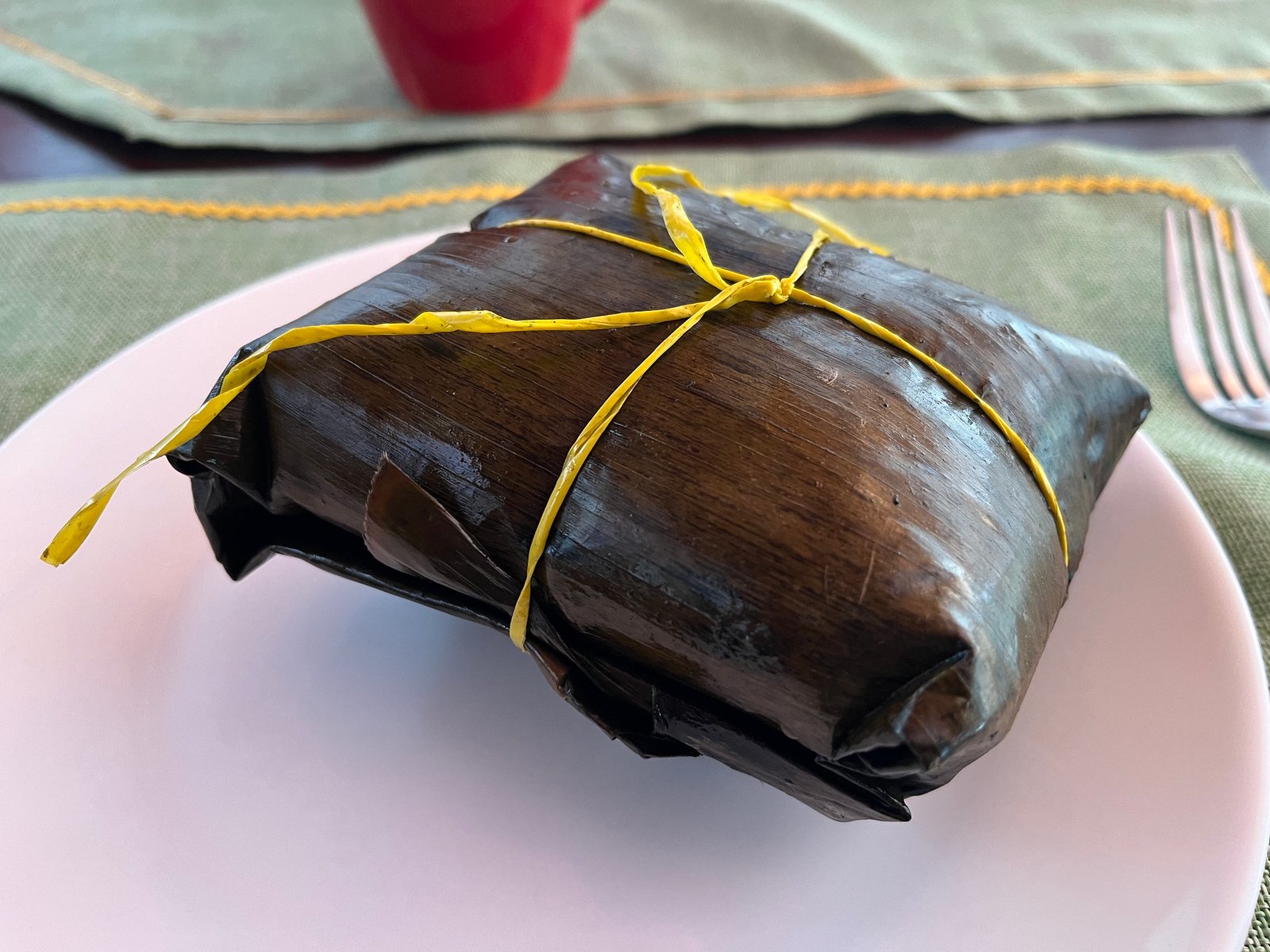
4. Quesillo
The word “quesillo” has so many meanings across the Spanish-speaking world. In Mexico, it's a type of Oaxacan string cheese. In the Dominican Republic and Venezuela, it's a flan-type dessert. But in Nicaragua, quesillo is one of the most delicious snacks/street food items. Soft mozzarella-like cheese is wrapped in a thick corn tortilla and doused in sour cream, vinegar, salt, and pickled onions. Yum! We got our quesillo from one of quesillo road stands when we drove from Leon to Managua, and Nicaraguans would probably agree that the best quesillos are offered on this stretch of the road.
Was it tasty? Claro, que-si-llo! (That’s a Nicaraguan dad joke for those of you who speak Spanish.)
In Esteli, we also had a variation of this dish, quesillo en gloria, where instead of a corn tortilla, fried plantain was used as a base on which white, soft cheese with pickled onions was served. The dish was tasty, although Edgard from Matagalpa, when we told him about it, dismissed it as a mockery of the classic recipe.
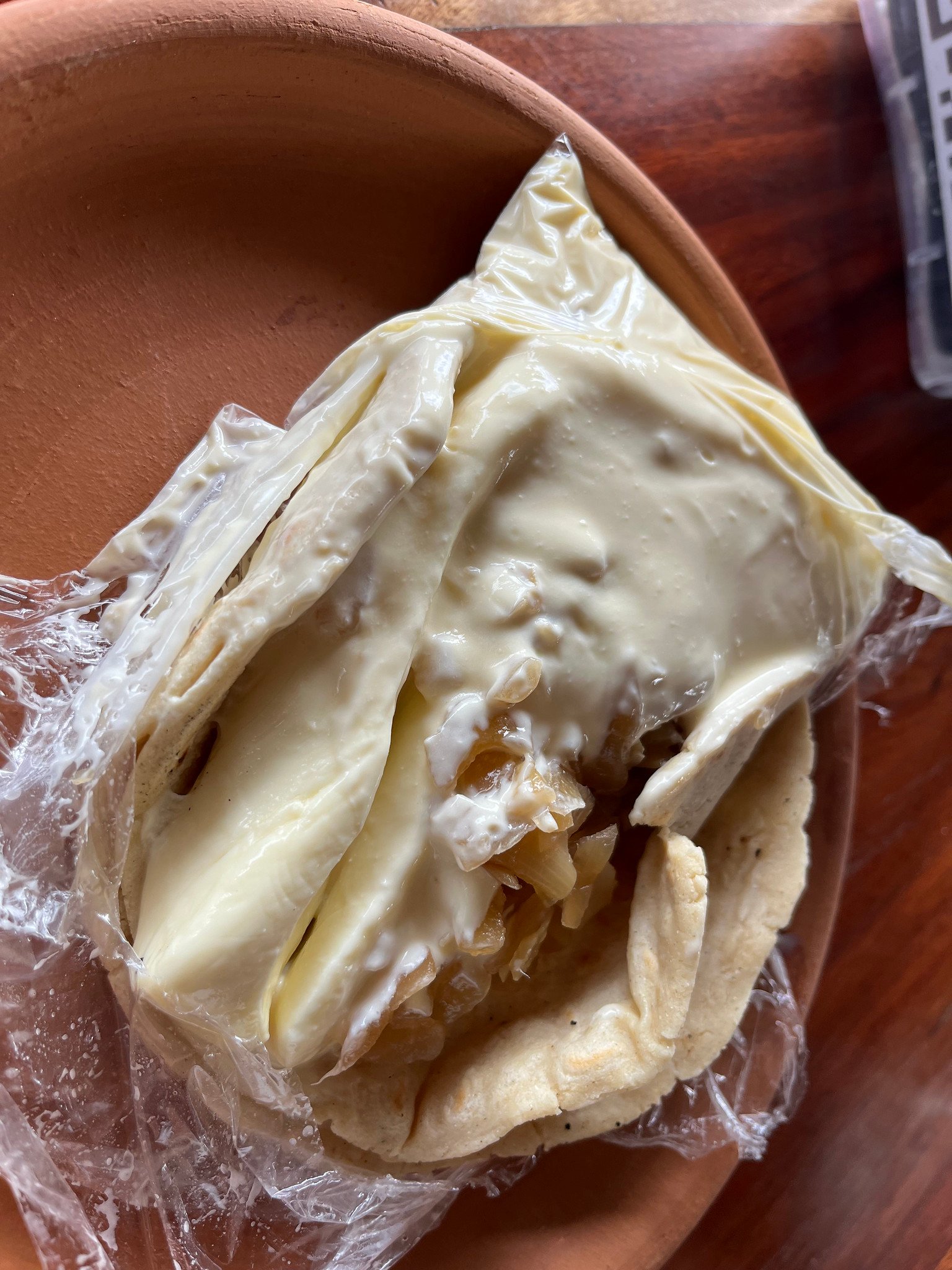
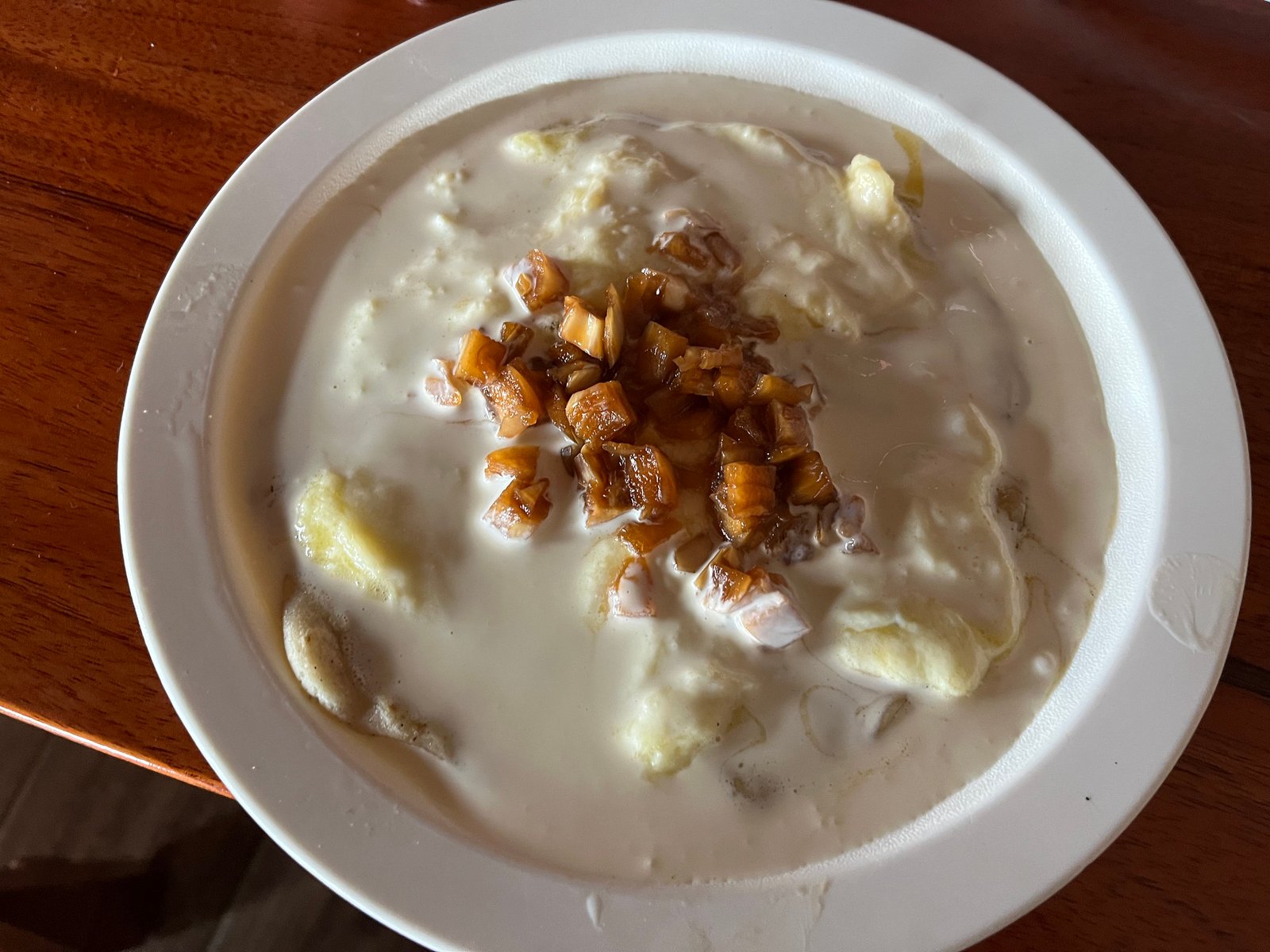
5. Güirilas
Güirila (pronounced gwee-ree-lah) was a culinary discovery that we made in Masaya, outside of the artisanal market, where we ran into a busy family of street vendors preparing food on a portable grill. The family was running a smooth operation with one member taking orders, the other operating the grill and preparing food, and the third dispensing orders and collecting payments. Our curiosity, of course, made us immediately join a long line and get whatever everyone was getting. Initially, we thought these were pupusas. The ingredients reminded us of what we saw in El Salvador. Julia even said the word “pupusa” out loud, but the locals jumped in to correct that these weren't pupusas but “güirilas”. And so, a new word was added to our culinary vocabulary. What is a güirila? It's a sweet tortilla made from young white corn with cuajada (fresh cheese) grilled in banana leaves. It has a subtle sweet taste, and like pupusa, it's best to be eaten piping hot. Although we snacked on it in late afternoon, Nicaraguans often eat it for breakfast with coffee. Muy delicioso!
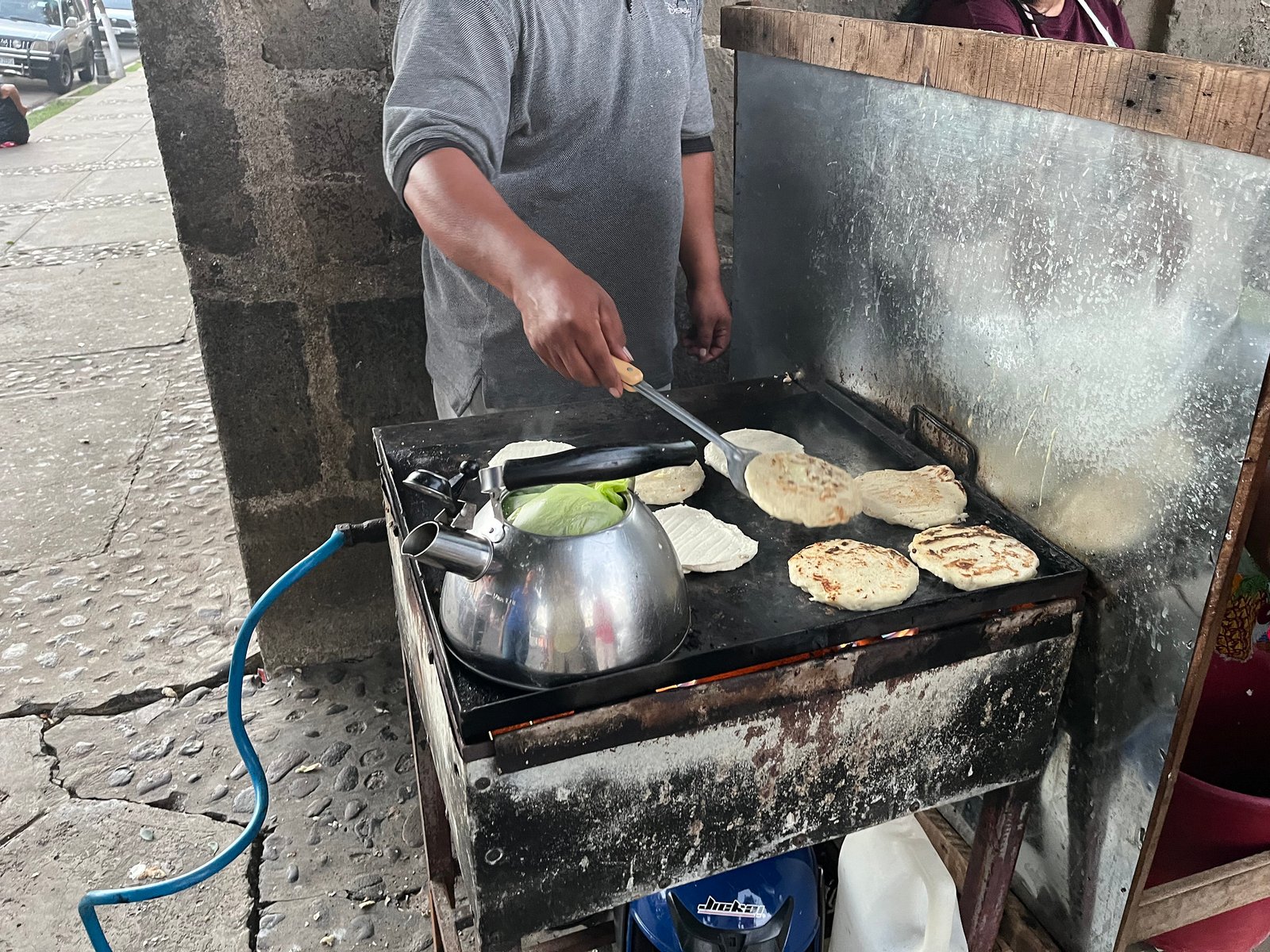
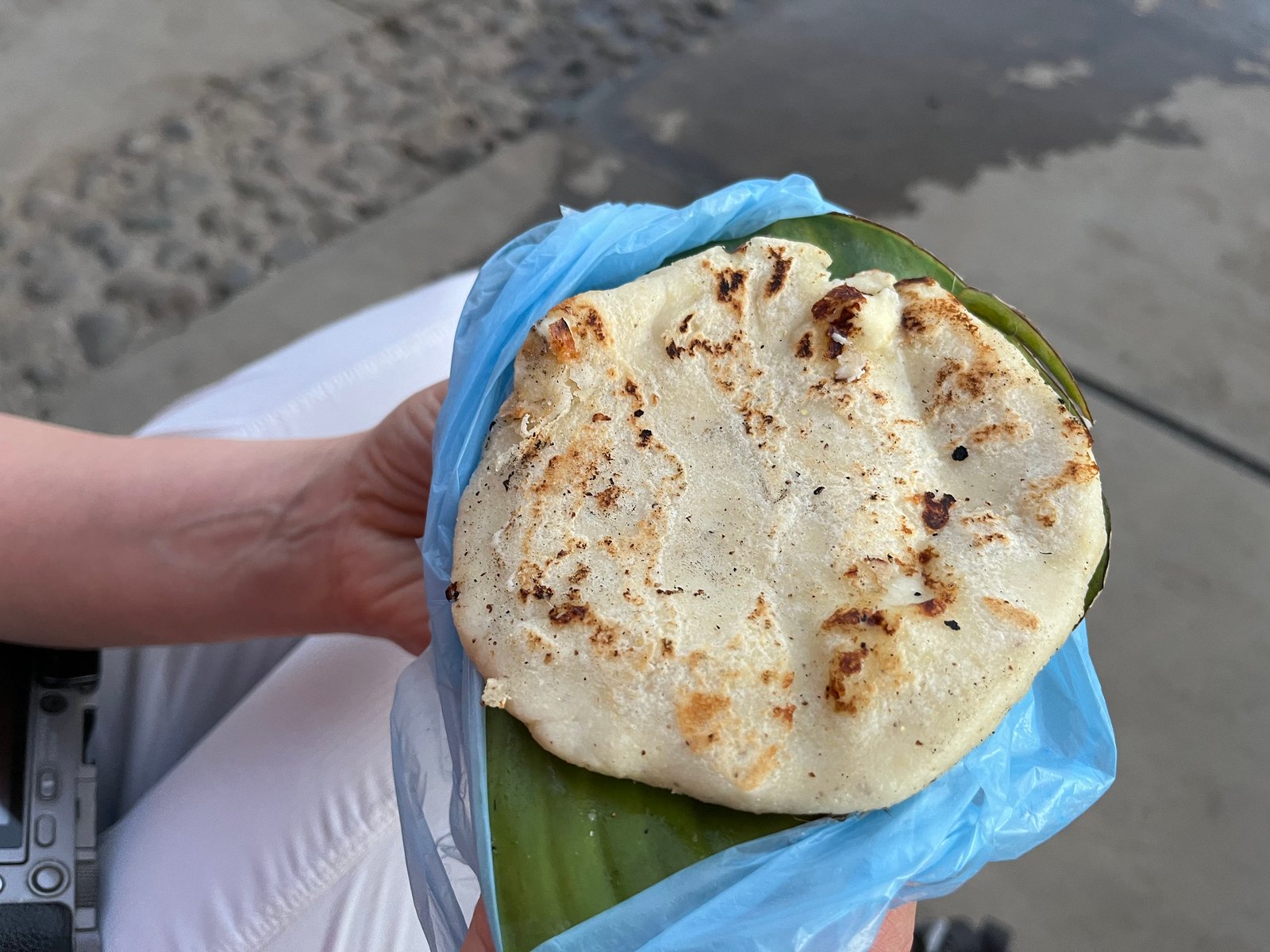
6. Pescado frito en la plancha
Fried fish! During two lazy days on a beach at Las Peñitas, our go-to lunch and dinner option was always to split a red snapper cooked on a grill. Every oceanside restaurant had this item on the menu, and the fish was always fresh, properly seasoned, and flavorsome. I don't know how they make it, but coastal cooks just know how to properly grill fish. If you find yourself at one of the surfing spots on the Nicaraguan Pacific coast, skip the steak and get the grilled fish instead.
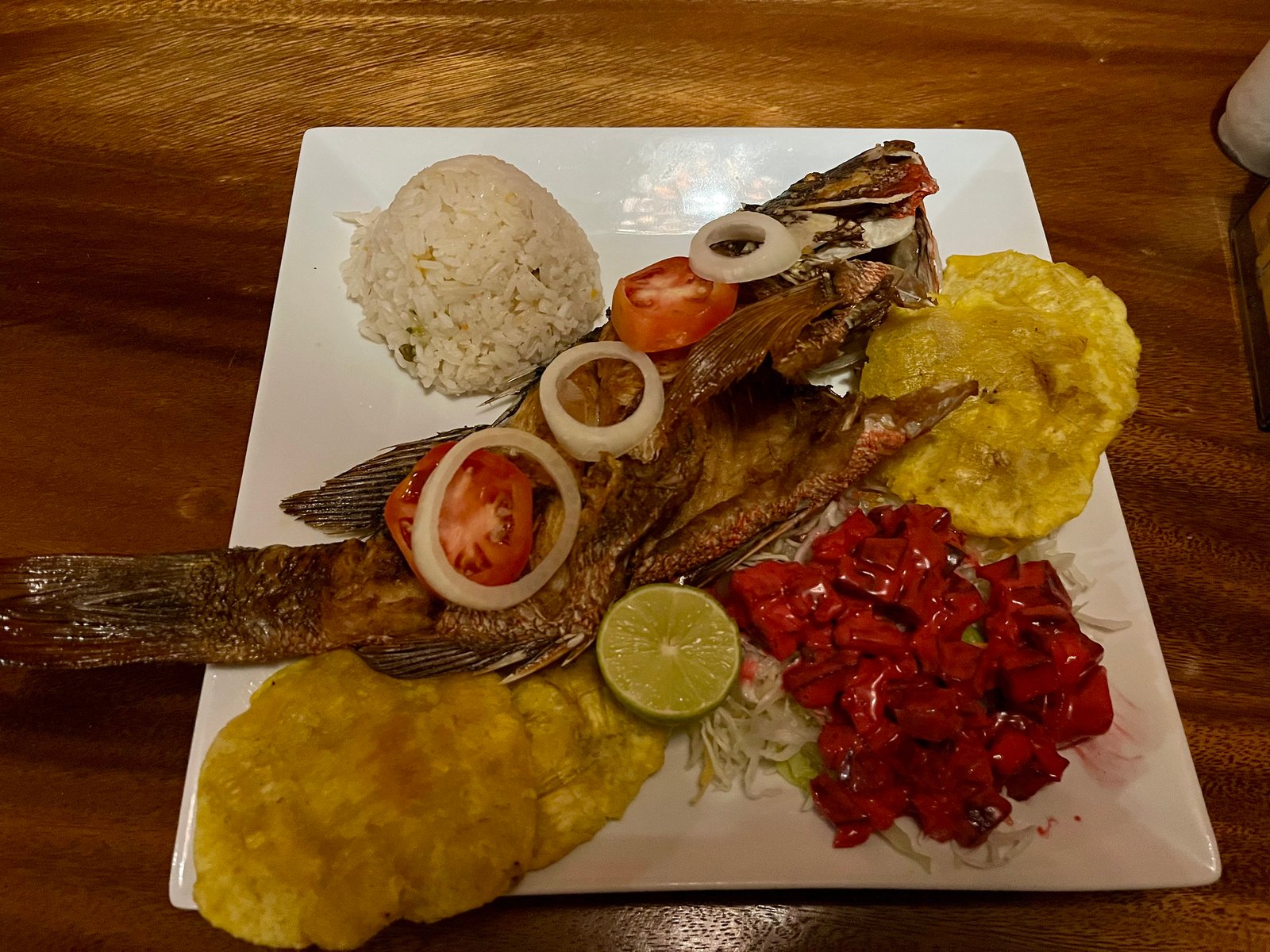
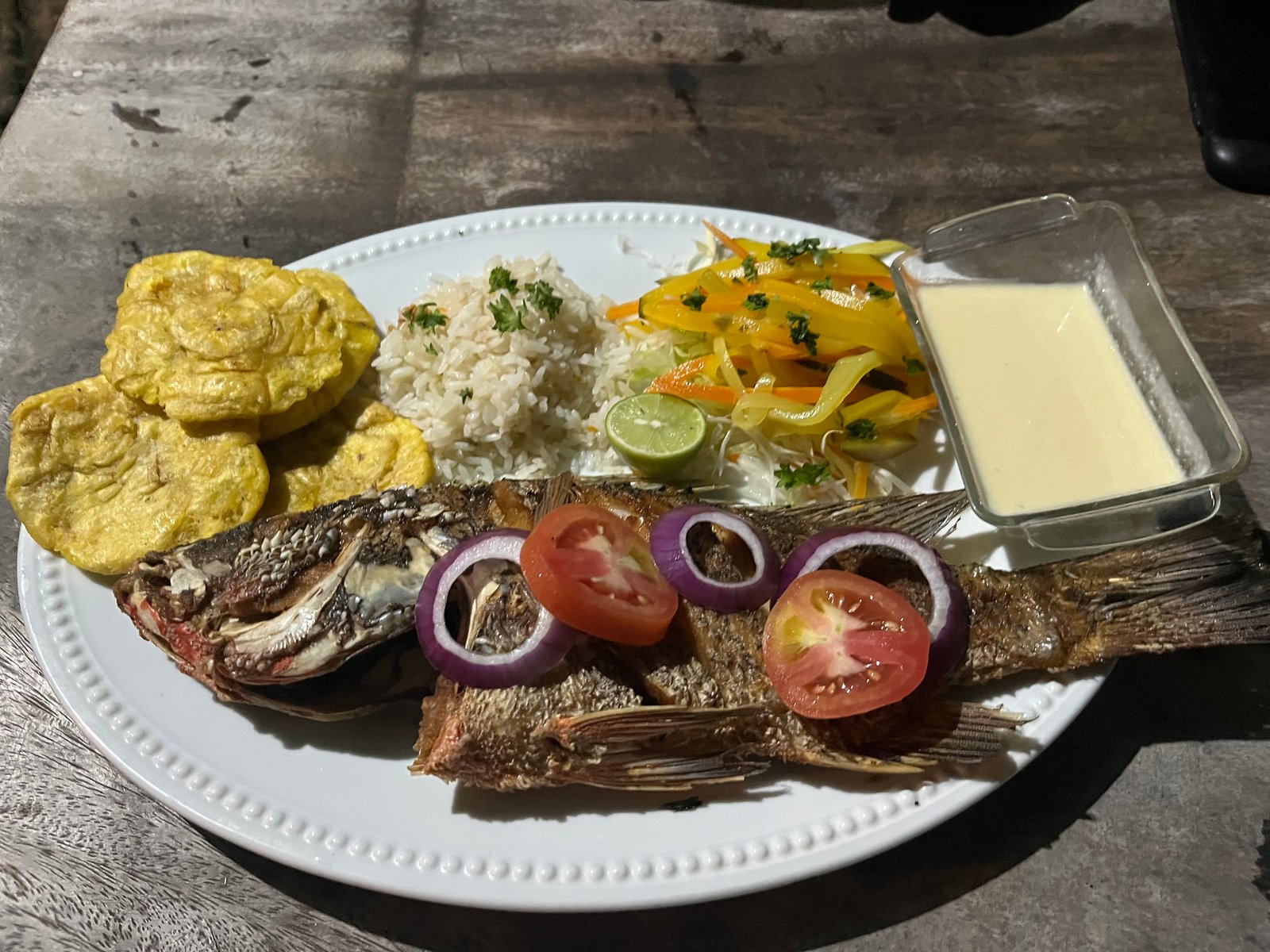
7. Indio Viejo
When we saw indio viejo (“old Indian”) on the menu of our eco-lodge on Ometepe Island, our memory immediately transported us back to Cuba, where we had a dish called ropa vieja (“old clothes”). And, as it turned out, the dishes are cousins because both are tomato-based beef stews, although the Nicaraguan version is spicier and peppery with plenty of onions, garlic, and herbs added to the mix. The “old Indian” is also one of the oldest Nicaraguan dishes that dates to pre-Columbian times. And it was very fitting that we tried it on Ometepe Island, as it's where it originated with the Nicarao Indians.
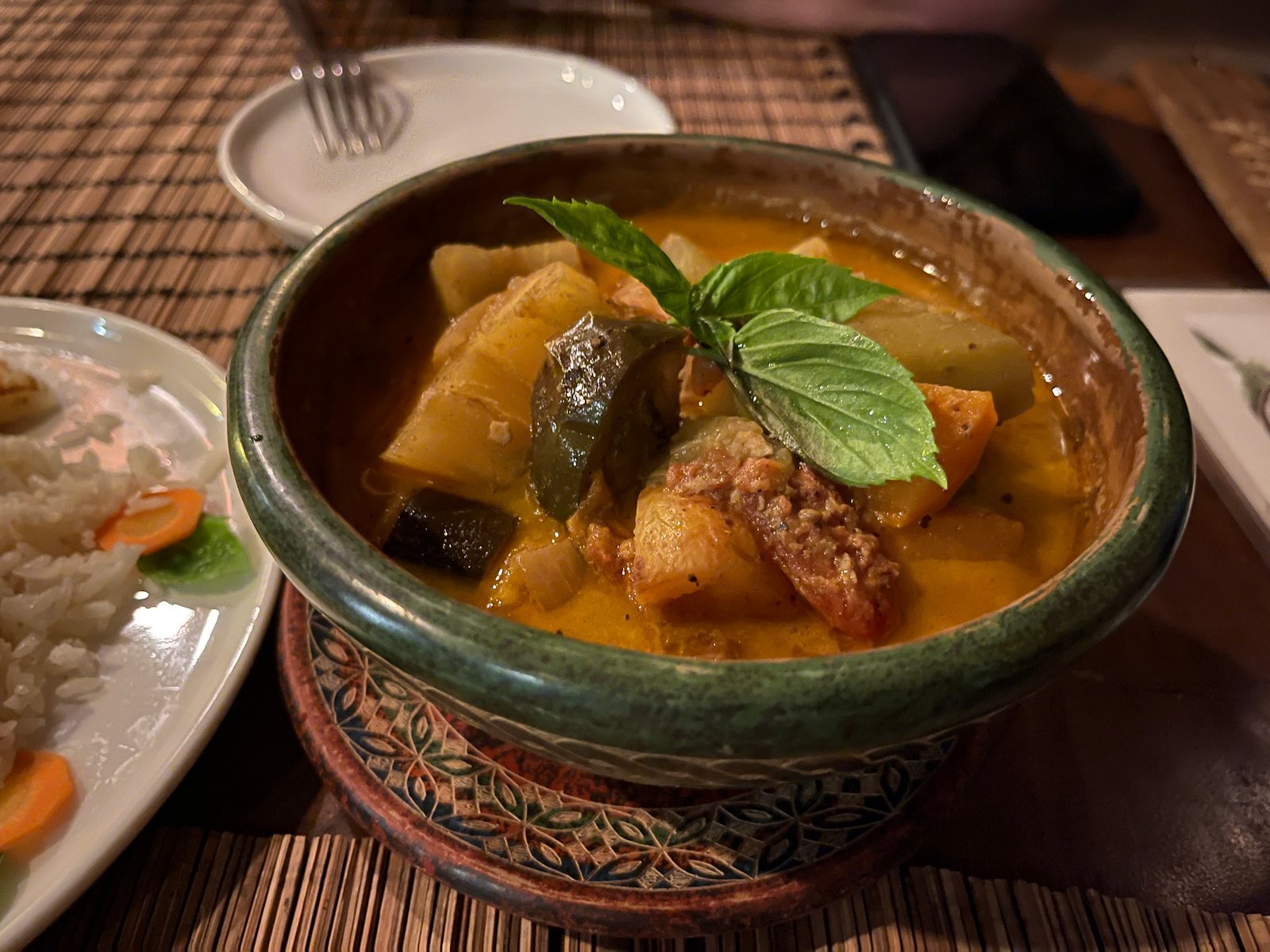
8. Tostones
We had tostones in other parts of Latin America and the Caribbean, but in Nicaragua, these fried crispy slices of green plantain were especially delicious. In many other countries, tostones are very dry and offered as a side dish like French fries. But in Nicaragua, they were juicy and chewy and often served with salty fried cheese or beans, making it quite a good snack.
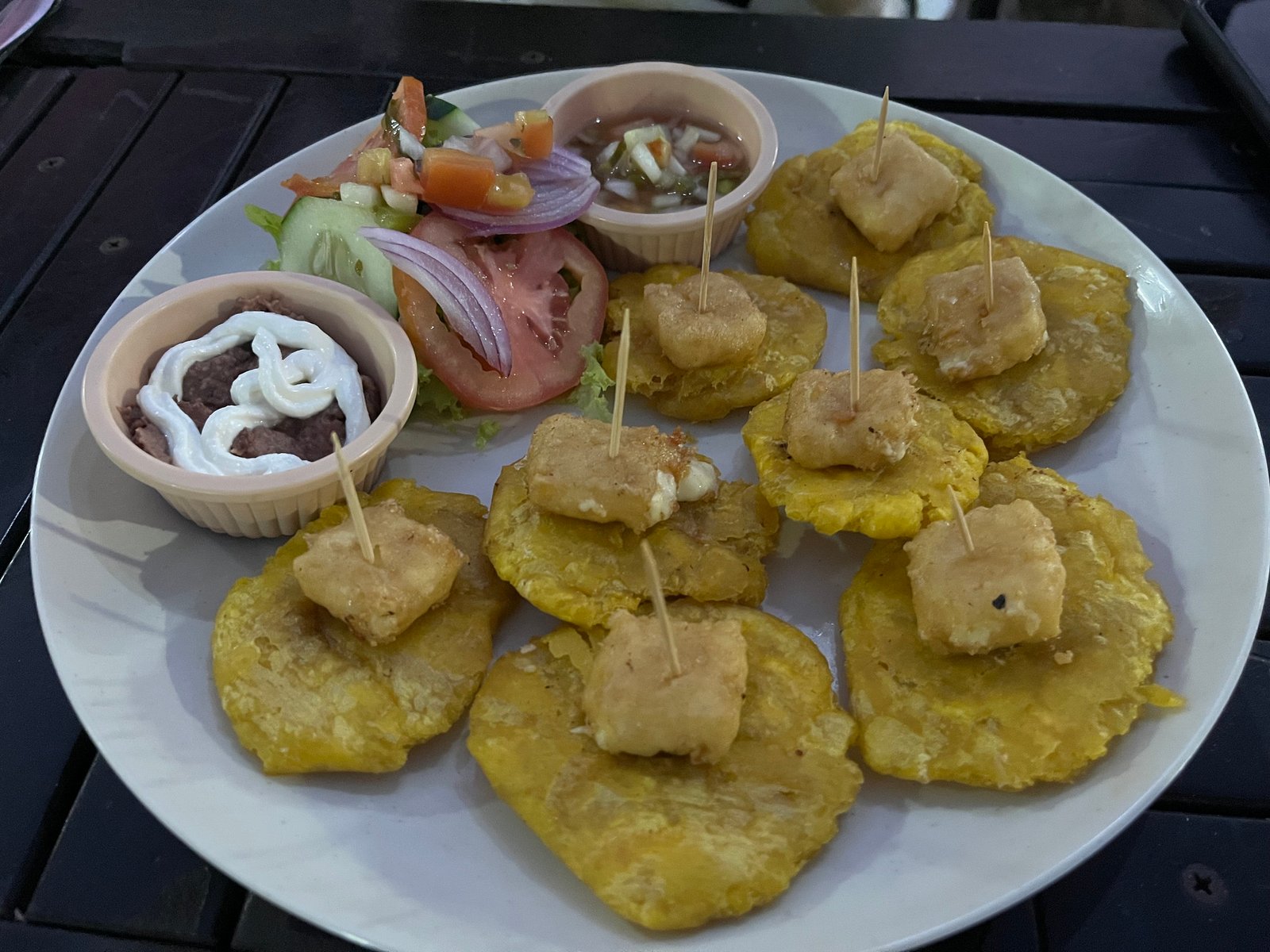
9. Buñuelos
Like tostones, buñuelos are not uniquely Nicaraguan, and we found this yummy street snack of deep-fried dough in other places in Central and South America (and Colombia probably has the best version of this fritter). Unlike some other countries, Nica’s buñuelos are not made from wheat flour but from the yucca plant. In Nicaragua, these donuts are usually sold in plastic bags and soaked in sugary syrup. We bought buñuelos from a street vendor in Matagalpa and washed them down with Selva Negra coffee before embarking on an epic hiking adventure through the jungle.
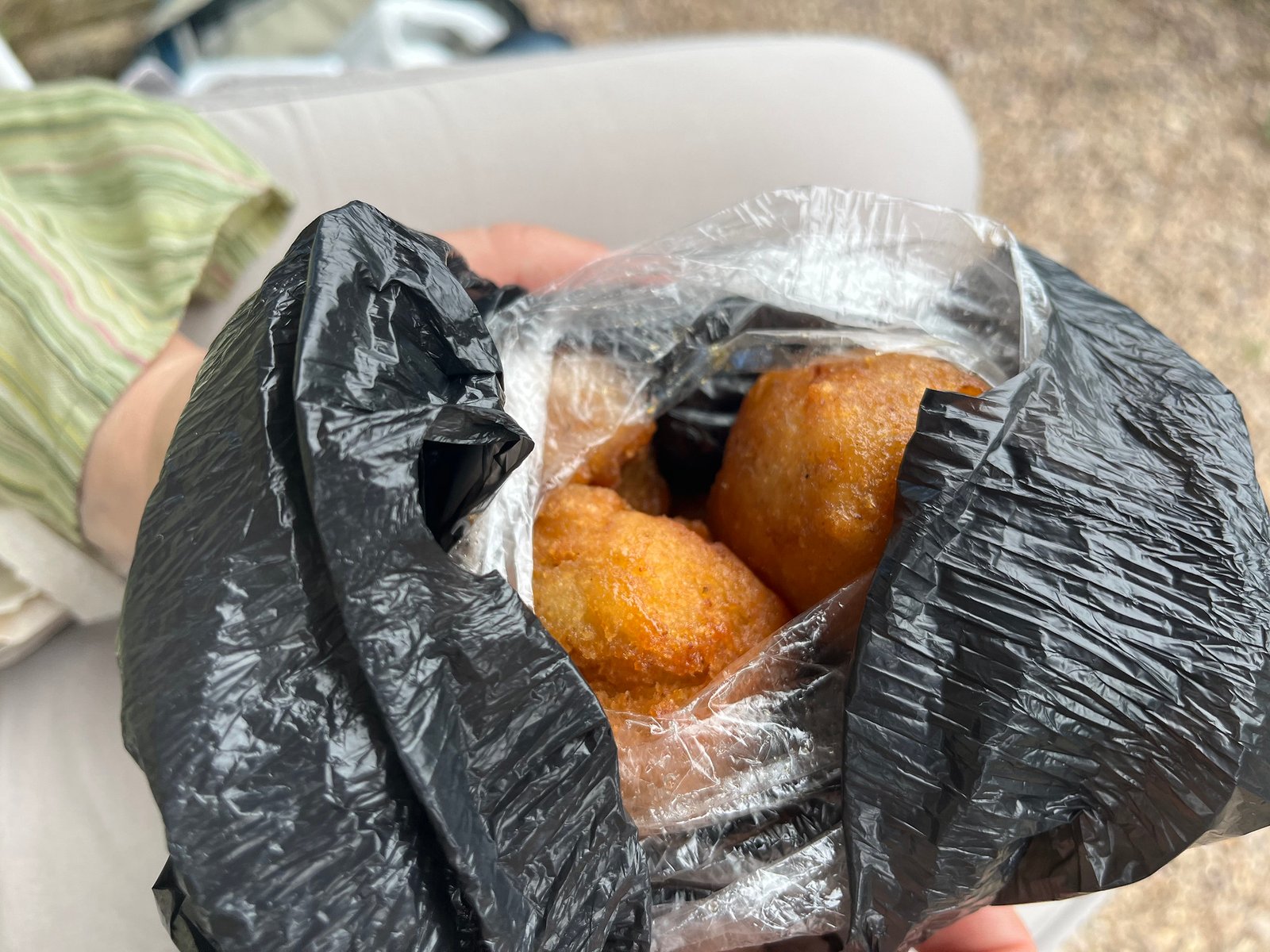
10. Rosquillas
We tried rosquillas on our first day in Nicaragua when we purchased them from a bodega in Granada. These corn cookies were crispy and crunchy, but we found them to be barely edible and lacking any decent taste profile. Everything changed several days later when we found ourselves in Somoto on the way to Somoto Canyon. This small Nicaraguan town by the Honduran border is known as the capital of rosquillas and as the place to buy them. We pulled up to a store called “Rosquillas Vilchez,” but Google Maps showed at least several other rosquilla places nearby. Although we didn't like rosquillas at our first encounter, we gave them another chance and loaded up on these baked goodies. For the next few days, rosquillas were our go-to snack. Maybe it is an acquired taste, or maybe rosquillas in Granada were sitting for too long on a bodega’s shelf and got stale, but Somoto’s corn cookies started to grow on us more and more. We especially enjoyed them as they were barely sweet, quite healthy, and fun to eat. And rosquillas, without a doubt, are a traditional Nicaraguan cookie. At Somoto Canyon, we ran into a Nicaraguan-American guy who was traveling through Nicaragua, showing his American wife the country of his birth. When we offered him rosquillas, he smiled and responded: “Thank you, but we bought several kilos! They are very good and very Nicaraguan! Enjoy them!”
